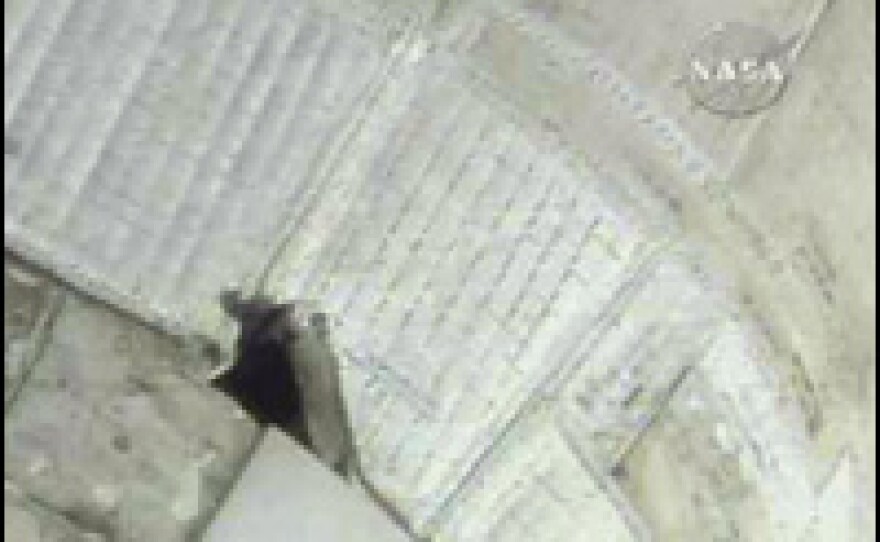
NASA astronauts ventured out to fold down a loose flap of a thermal cloth on the space shuttle Atlantis, using a medical stapler to secure the fold in place. The shuttle is docked to the International Space Station, which is showing signs of recovering from a massive computer failure.
Two Russian cosmonauts began to get crucial computers up and running Friday, four days after they crashed at the International Space Station and curbed the outpost's ability to orient itself and produce oxygen.
The progress came after days of frustrating effort and, for the time being, removed a set of troubling options lying ahead for NASA and the Russian space agency if the computers continued to fail.
"They're up and operational and this is good news for all," said Lynette Madison, a NASA spokeswoman in Houston.
The space agency is still trying to find the cause of the failure. The leading theory is that a newly installed power-conducting truss caused the glitch — the Russian computers blinked out at about the same time the connector went on line.
Mike Suffredini, NASA's space station program manager, said they are unsure whether the connector caused the problem, but the connector isn't required for station operations until a later power hook-up. Astronauts disconnected it as part of their space walk.
Without the navigation systems, the station's orbit would have dropped to about 200 miles above the Earth by September. The drop of about 37 miles from the current position isn't an alarming amount, said Vladimir Solovyov, Russian mission control chief.
"We have enough time to calmly deal with the situation," Solovyov said. "There is no need to rush."
The space shuttle Atlantis may stay docked at the space station so its thrusters can help maintain the station's position, if necessary. The shuttle's mission was already extended from 11 days to 13 days so astronauts could conduct a spacewalk to repair a rip in the protective thermal blanket.
Astronauts James Reilly and Danny Olivas, armed with a medical staple gun and a needle and thread, repaired the thermal blanket that peeled back during Atlantis' launch. The six inch by four inch rip exposed some of the shuttle's outer skin.
The cloth is used to protect the shuttle from the 1,000-degree heat generated at re-entry. NASA engineers don't believe the rip would have endangered the spacecraft during landing, but it could cause enough damage to require repairs on the ground.
Atlantis launched June 8, carrying seven astronauts to the space station, to continue work on the long-running construction project, scheduled for completion in 2010. The shuttle's cameras, laptop computers and some lights were shut off Thursday to save energy in case it needs to stay another day to help at the space station.
This type of massive computer failure had never been seen before on the space station, although individual computers do fail periodically.
NASA said that in the worst-case scenario, the space station's three crew members would have been forced to return home to Earth early if the computers cannot be fixed. But that scenario is still a long way off, said Bill Gerstenmaier, NASA's associate administrator for space operations. Gerstenmaier said abandoning the space station is a remote possibility.
Suffredini agreed, saying there are no plans to de-man the space station.
"There is nobody in this agency, or as far as I know in the Russian agency, that thinks this vehicle is at risk of being lost, not even remotely," he said. "We work problems like this all the time."
Written by Kayla Webley from NPR reports and The Associated Press.
Copyright 2022 NPR. To see more, visit https://www.npr.org. 9(MDAzMjM2NDYzMDEyMzc1Njk5NjAxNzY3OQ001))





